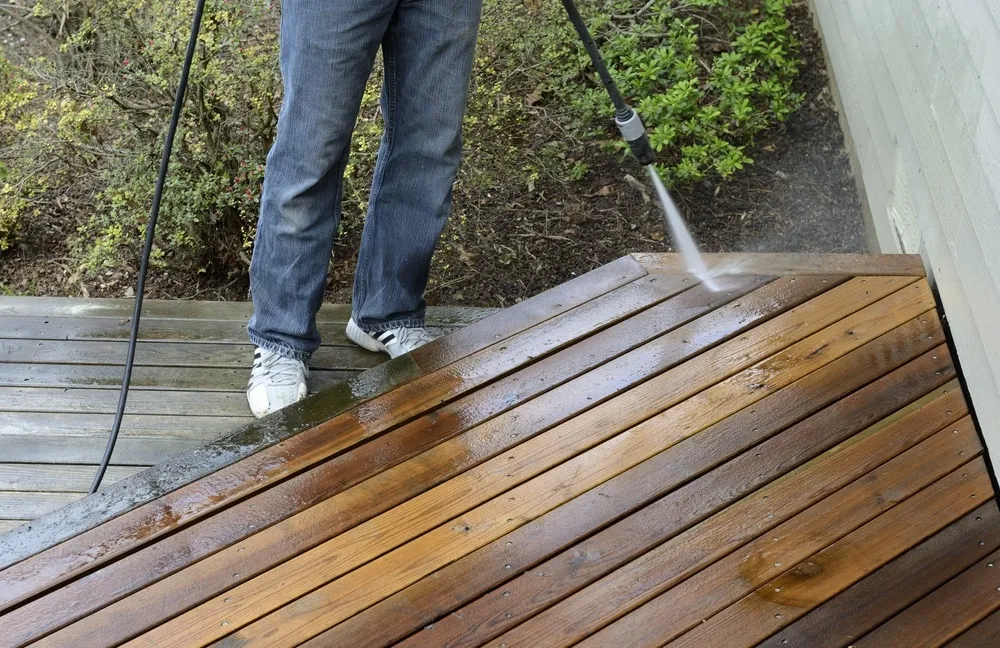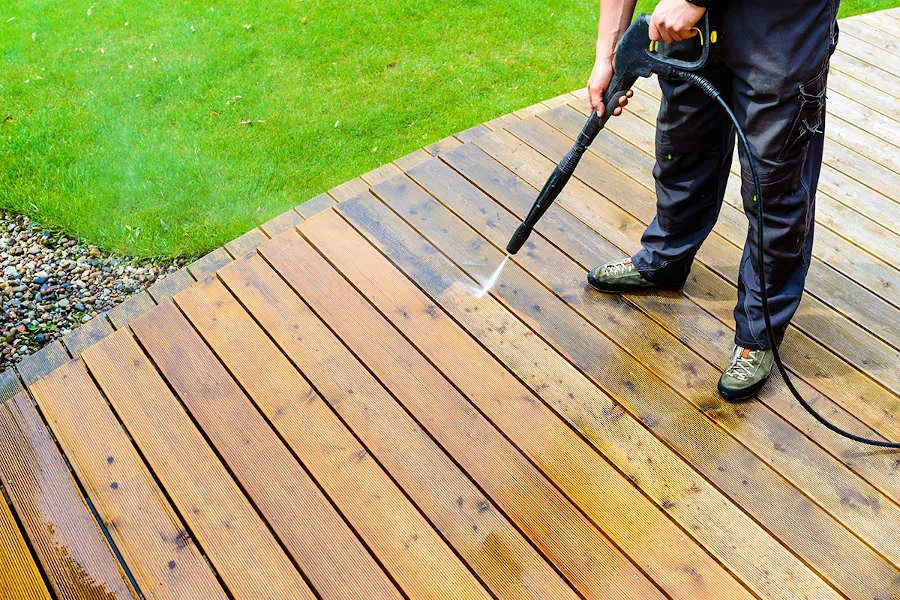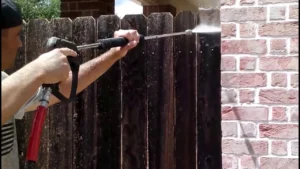A clean, well-maintained fence enhances your property’s curb appeal, provides security, and increases longevity. However, many homeowners make critical mistakes while cleaning their fences, leading to damage, discoloration, or reduced durability. Understanding these common errors will help you avoid costly repairs and ensure your fence remains in excellent condition. Below, we explore the seven most common fence cleaning mistakes in detail and how to avoid them.
Using the Wrong Cleaning Solution
Using an inappropriate cleaning solution is one of the most frequent fence cleaning mistakes. Many homeowners believe that strong chemicals, like chlorine bleach or ammonia-based cleaners, are the best way to remove stubborn stains, mildew, or algae. While these products may be effective at removing grime, they can cause long-term damage to the fence material.
Wood fences, for example, can become dry and brittle when exposed to harsh chemicals, leading to cracking and splintering. Chlorine bleach can also strip the natural color from the wood, making it appear faded or discolored. Metal fences are not immune to this mistake either—using corrosive cleaning agents can lead to rust and deterioration. Vinyl fences may develop a chalky residue if exposed to strong chemicals.

How to Avoid This Mistake?
- Choose a fence-friendly cleaner based on the material of your fence.
- For wooden fences, use a mild soap solution or oxygen bleach instead of chlorine bleach.
- For metal and vinyl fences, opt for non-abrasive cleaners that effectively remove dirt without causing damage.
- Always read the cleaning product labels to ensure compatibility with your fence type.
Neglecting to Test the Cleaner First
Applying a new cleaning solution directly onto your fence without testing it first is a risky move. Some cleaning agents may react negatively with your fence material, leading to permanent discoloration, staining, or even damage. This is especially true for fences made of wood, which can absorb chemicals unevenly, causing blotchy or faded areas.
Many homeowners assume that all commercial cleaners are safe for all fence materials, but this is far from the truth. A solution that works well on a vinyl fence may be too strong for wood or metal. Additionally, homemade cleaning mixtures—such as vinegar and baking soda—can sometimes have unexpected reactions depending on the fence’s finish or sealant.
How to Avoid This Mistake?
- Before applying any cleaning product, test it on a small, hidden section of the fence.
- Wait at least 24 hours to observe how the cleaner interacts with the material.
- If you notice discoloration, bubbling, or any other negative effects, switch to a gentler cleaning solution.
- Always follow the manufacturer’s recommendations for the best results.
Using Too Much Pressure When Power Washing
Power washing is a popular method for cleaning fences, but using excessive pressure can do more harm than good. A common mistake homeowners make is setting their pressure washer at a high PSI, thinking that more pressure equals better cleaning. However, excessive force can strip away protective coatings, damage wood fibers, and even dent metal fences.
Wooden fences, in particular, are vulnerable to high-pressure washing. If the pressure is too strong, it can cause splintering, leaving the surface rough and weakened. Even vinyl fences can suffer if the force of the water is too intense, potentially warping or cracking the material.

How to Avoid This Mistake?
- Use a pressure washer with a setting below 1500 PSI for wooden fences.
- Keep the nozzle at least 12 inches away from the fence to prevent direct impact damage.
- Use a fan-spray nozzle rather than a pinpoint spray to distribute the pressure evenly.
- For vinyl and metal fences, a garden hose with a spray attachment is often sufficient for routine cleaning.
Ignoring Mold and Mildew Buildup
Mold and mildew are common issues for fences, especially in humid or rainy climates. These fungi thrive in damp environments, and if left unchecked, they can weaken the fence material, leading to premature deterioration. Many homeowners make the mistake of ignoring early signs of mold, assuming it’s just surface dirt.
Over time, mold and mildew can penetrate deep into wooden fences, causing rot and decay. Vinyl fences can also develop unsightly black or green mold stains, while metal fences may experience accelerated rusting due to trapped moisture. If mold is not removed promptly, it can spread quickly, requiring extensive repairs or even replacement.
How to Avoid This Mistake?
- Inspect your fence regularly for signs of mold and mildew, especially in shaded or damp areas.
- Use a vinegar and water solution or an oxygen bleach mixture to remove mold safely.
- Avoid using chlorine bleach, as it can weaken wood and damage nearby plants.
- Ensure proper drainage around the fence to prevent excess moisture buildup.
Skipping Regular Cleaning
Many homeowners only clean their fences when they become visibly dirty. However, neglecting regular maintenance allows dirt, grime, and algae to build up, leading to long-term damage. Over time, accumulated debris can weaken the structure of the fence, making it more susceptible to cracks, warping, and decay.
Wood fences, in particular, require routine cleaning to prevent dirt from settling into the wood grain. Vinyl fences can develop a yellowish tint if not cleaned regularly, while metal fences may experience corrosion if dirt and moisture remain trapped against the surface.
How to Avoid This Mistake?
- Clean your fence at least twice a year—once in the spring and again in the fall.
- Remove debris such as leaves, dirt, and cobwebs to prevent buildup.
- Apply a protective sealant or stain to wooden fences to minimize moisture absorption.
- If your fence is exposed to heavy rain, pollution, or bird droppings, consider more frequent cleaning.
Not Rinsing the Fence Properly
Leaving cleaning residue on your fence is another common mistake that can lead to long-term damage. Some cleaning solutions contain chemicals that, if not rinsed thoroughly, can attract dirt or cause streaking. Over time, leftover soap or bleach residue can degrade the fence material, leading to discoloration or surface damage.
How to Avoid This Mistake?
- After cleaning, rinse the fence thoroughly with a garden hose or low-pressure washer.
- Ensure all soap, bleach, or cleaning solution is completely washed away.
- Wipe down excess moisture to prevent water stains and streaking.
Overlooking Repairs Before Cleaning
Cleaning a fence without addressing existing damage can worsen the problem. Loose boards, rusted screws, and cracks should be repaired before applying water or cleaning solutions.
How to Avoid This Mistake?
- Inspect the fence for damage before cleaning.
- Secure loose boards, replace rusted screws, and sand rough areas.
- If major repairs are needed, address them before cleaning to prevent further deterioration.
Conclusion
Fence cleaning is essential to maintaining its appearance and durability. By avoiding these seven common mistakes, you can extend the life of your fence and keep it looking fresh year-round. Use the right cleaning solutions, apply proper techniques, and perform regular maintenance to prevent unnecessary damage. With a little effort, your fence will remain a beautiful and functional part of your property for years to come.





